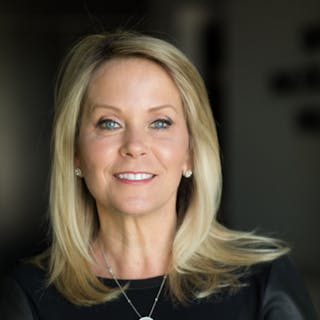The real cost of business abandoning inclusion
Following Walmart and others’ withdrawal from DEIB initiatives, consultant Lisette Arsuaga explains how these businesses are out of sync with real Americans’ expectations.

In today’s business landscape, data clearly shows that inclusive marketing and DEI initiatives aren’t just social initiatives. They’re crucial business imperatives backed by a supermajority of consumers. Yet, in the last year and in the face of a strong pushback from a loud minority of people, we’ve witnessed several companies eliminate DEIB and inclusive marketing efforts. In doing so, they have not only stepped away from prioritizing half of consumers in the country, but they have also made a choice to stand against the expectations on equity and inclusion of an overwhelming number of Americans.
What is perplexing about this new corporate trend is that for years, we have been showcasing research on the impact that diverse marketing has on business growth. Despite the many proof points we’ve shared, we’re still having the same conversations we had years ago.
These latest corporate behaviors aren’t following growth. Maybe it’s time to highlight not the opportunity alone, but the losses as well. Simply put, research proves that for every consumer who pushes back against a brand that is inclusive in their marketing efforts, there are more than five who will ensure they stand with it.
Want to go deeper? Ask The Drum
Representation alone won’t do it though. In fact, the Culture Inclusion Accelerator’s (CIA) CIIM™ MMM study at the ad level proves that culture alone is responsible for anywhere between 55-66% of a campaign’s success. So, if creating a successful campaign is a priority for a brand – as it should be – then winning can only happen if relevant cultural insights and cues are present and visible to the intended target. That can only happen when that culture is well represented in the strategic process and creative development of a campaign. When done right, business growth happens.
When marketers shy away from inclusion, they’re leaving dollars on the table – or better yet, gifting those dollars to competitors for fear of being targeted if they choose to be inclusive of diverse segments.
As a business decision, this makes no sense. Research has shown that 65% of consumers strongly agree/agree that representation and culture should be present in brands’ marketing efforts. Only 17% strongly agree/disagree. These consumers are actually comfortable with brands including representation and culture of all groups. Although the pushback against inclusion in our industry has mostly targeted the LGBTQ population, the CIA survey showed that 58% of consumers are comfortable with gay/lesbian representation (while only 23% are not), and 54% are comfortable with brands including transgender representation and culture (while only 26% are not).
Advertisement
It seems like consumers who have a problem with DEIB, seem to have the greatest issue with the “equity” part. Perhaps they believe that by providing equity to all, those who’ve benefited in the past will be negatively impacted. So, they’d rather have 100% of a smaller pie than 50% of a much larger one. That pie is certainly bigger.
Today, eight out of 10 consumers believe recruiting AND promoting employees from diverse groups is effective in enhancing the workforce. Only about 10% of consumers will be less likely/much less likely to support a brand that creates advertising that is representative of groups, develops tailored consumer experiences to diverse audiences, offers diverse targeted products and services, and/or sponsors events for diverse groups.
There’s no doubt that companies that move towards equity with conviction will solidify their position with consumers. The research proves it. For every consumer who doesn’t want to see equality in their brands’ workforce and advertising efforts – regardless of race/ethnicity, abilities, sexual orientation and age – there are nearly eight (7.8x) who do expect it and reward that brand with their loyalty. This is up from 5.9x in 2023, so consumer expectations are increasing year after year.
Advertisement
We’re not listening to consumers. They’re being very clear on what brands they will support and why. In fact, among brands that consumers have used in the past year, if one backtracks from a social cause they believe in, 70% of consumers cite they would immediately stop purchasing or would only continue to purchase until they find a brand that is more supportive of a social cause in which they believe. The likelihood that they come back is slim to none.
Soon enough, companies will start realizing their huge losses after stepping away from equity and inclusion. What will happen is one of two things: they’ll either eventually disappear from our brand considerations, or they will be forced to step forward again – except this time they’ll start way further behind from where they were before, as it will take a significant amount of time, targeted strategic messaging, and investments to gain diverse consumers’ trust again.
Let’s be clear: stepping away from inclusion is a fad that will disappear before we know it – alongside the companies that have supported the minimization of inclusive marketing and DEIB. What isn’t a trend is the need to prioritize all consumers in culturally relevant ways in order to maximize your brand’s growth – or even survival. Now, THAT is a consumer expectation.
Suggested newsletters for you
Lisette Arsuaga is co-founder of the ANA’s Alliance for Inclusive and Multicultural Marketing (AIMM), the Culture Inclusion Accelerator (CIA), and DMI-Consulting.
